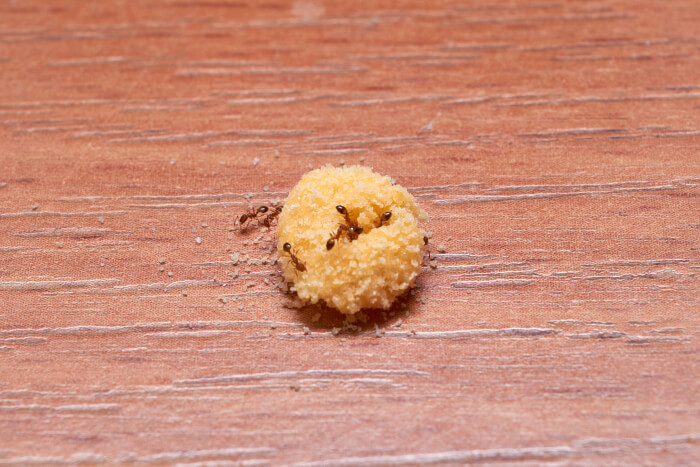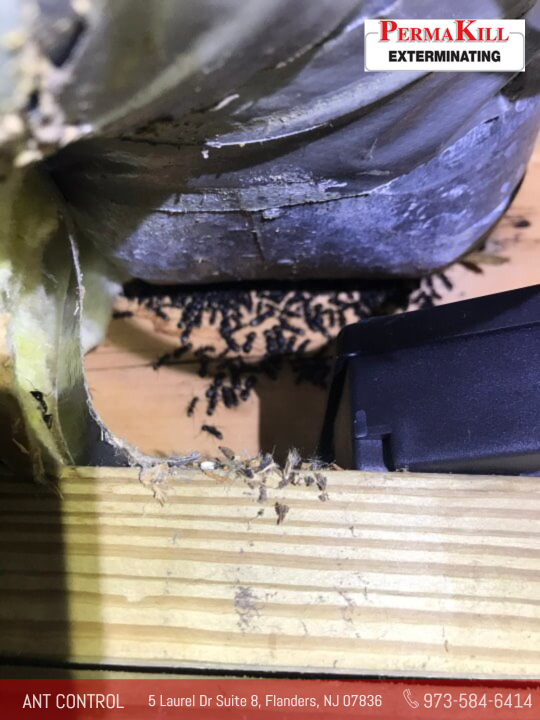


Nothing’s more frustrating than working hard on something only to find that it’ll be put to waste. That includes putting all your effort on ant bait only to see ants not eating bait. But even if foraging ants won’t eat the ant bait you prepared, there’s still hope for the ant infestation to end.
So why are ants not eating the bait? The most common reason is that the bait that you placed doesn’t contain the food source that they need at the moment. They usually feed on foods that are based on the needs of the colony at the time.
Ants tend to ignore the bait station sometimes, and it’s likely to happen to all baits. Ants tend to search for and feed on foods that are dependent on the needs of the ant colony at the time. Their needs can switch from protein foods to carbohydrate foods depending on whether the colony is active in foraging and nest building. They’d need sugar for energy or protein for brood production. They rarely need fats, but they do sometimes.
People expect ants to quickly feed on bait when it’s placed near an ant trail, but ants will actually tend to ignore it for some time. They’ll likely ignore food as they go past it since they’re following the chemical trail that already exists and leads them to another food source. Nonetheless, a scout ant will later find the bait and lay another trail to it.
Another reason why ants are not eating bait is that the bait was placed in a container that was washed in detergents and not rinsed thoroughly, making it a deterrent to ants.
An Argentine ant will feed on protein upon invading new territory. Since they feed on other insects and invertebrates, this removes competition for food in the area. They then return to a more normal carbohydrate-based diet when they’ve settled into the area.
Ant colonies develop in the spring and look for food sources that are high in fats and proteins. In the summer, they look for food sources rich in carbohydrates which can help their growing population. It’s important to note, though, that the nutritional needs of an ant colony can change swiftly. Using bait that makes up of multiple food sources can be the solution to this.
Since foraging ants bring the baits back to the ant nest, the amount of bait they return must reach a level wherein mortality surpasses the potential of the colony to produce new members.
When your ant trap won’t attract any ant species, even the sugar ants or worker ants, we suggest the following methods:
While various forms of bait such as liquid bait, gel bait, and bait granule can be used for ant control, many other factors are required when placing bait. Also, take note that worker ants must find the bait so you must have an idea of where ant activity consistently occurs.
Apart from the right bait, there are also other details to consider when dealing with your ant problem:
Patience is one of the most important values to have when dealing with ant bait. Since many ant baits don’t kill the ants in an instant, you must be patient with getting rid of your ant problem. You may still see ants for a week or more after baiting.
Baits are most effective when there are no other food items accessible to the ants. Keep all areas clean so the ants will only focus on the bait.
Remember to place enough bait and check it daily to make sure that it’s not depleted. If the ants get all the bait before you return, they may leave the area and go elsewhere before they spread enough bait to the colony. Huge ant colonies may need multiple locations and amounts of bait.
Bait should be positioned in the correct areas — namely areas with ant activity. Also, make sure the bait can’t be reached by children, pets, and wildlife. Don’t place bait directly on countertops where food is prepared or in a location where it can get wet and contaminated. Also ensure that the bait itself won’t contaminate sink water, a pet bowl, or a drain.
Baits don’t last forever. They soon age and decrease in quality when exposed to high temperatures, rain, or sunlight. Always check baited areas for signs of ant feeding and be sure to replace baits that have already aged and are no longer acceptable to ants.

Before you decide on a final bait, be sure to correctly identify the ant species you’re dealing with. Misidentification or even lack of identification almost always leads to unsatisfactory results. Here are quick descriptions of some ant species you may encounter:
A lot of ant species have food preference shifts during the year. For example, proteins are most effective in the spring and early summer because the queens need the nutrition provided by proteins to produce their eggs.
Keep in mind that the environment also plays a role in the effectiveness of baits. For instance, ant baits shouldn’t be placed unprotected where rain can ruin or wash off the substance.
Just because there are ants not eating bait doesn’t mean your ant problem will never end. You can go for other methods that lead to fewer ants — or better yet — dead ants. Just go for an insecticide or ant killer that has been proven to get rid of ants. These methods can serve as fire ant bait, carpenter ant bait, you name it!

If there’s a carpenter ant nest in your home, Permakill Exterminating will choose from several carpenter ant treatment techniques depending on the results of their inspections. They can also help you get rid of other ants and even other nuisances — such as rodents, ticks, and termites — in your home.
Permakill Exterminating specializes in providing scientifically proven treatments to meet your specific requirements. Call them now to get a quote.